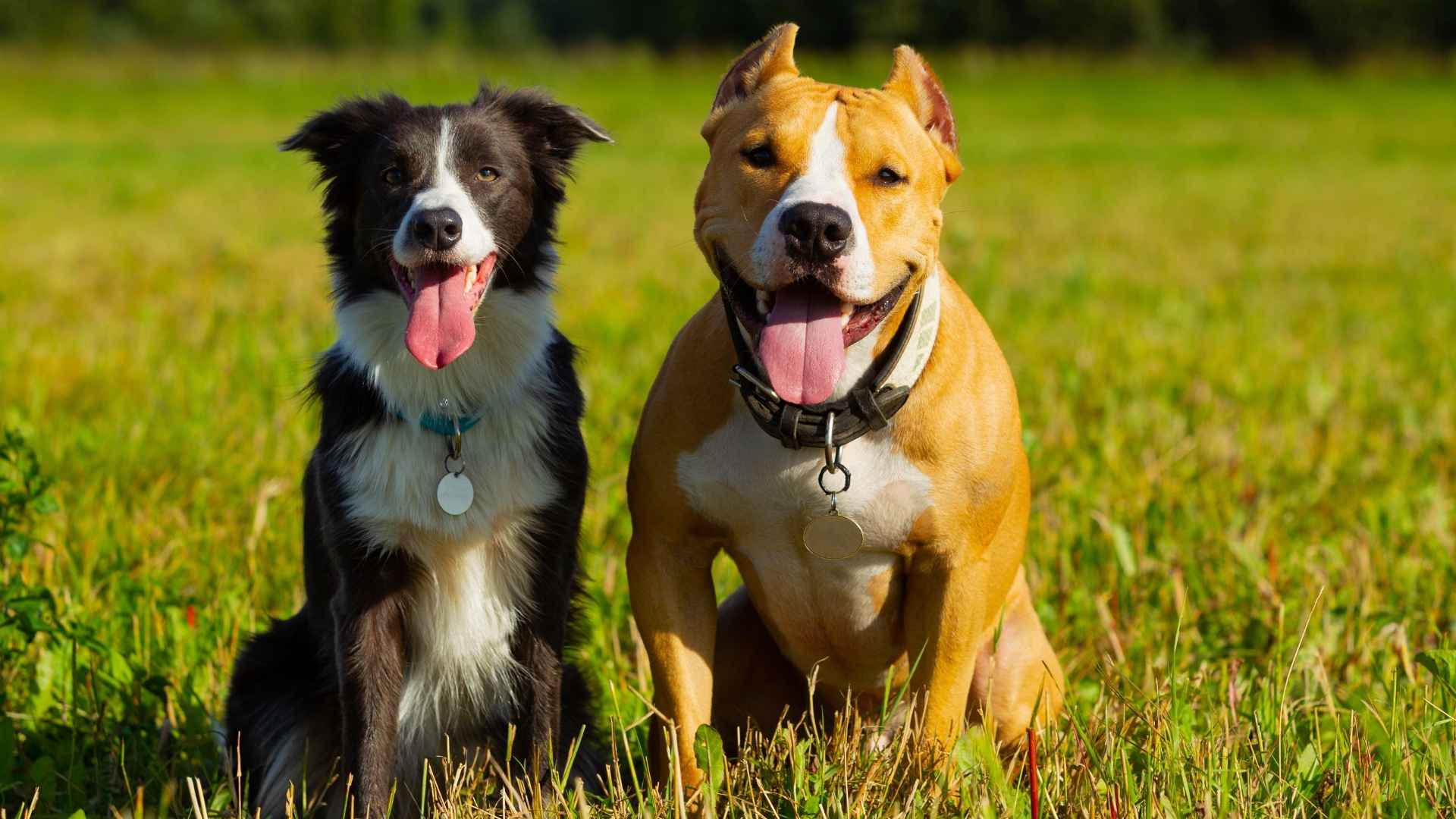Some dogs are natural social butterflies—they waltz into the dog park, wag their tails like it’s a VIP party, and somehow have a new best friend before you’ve even unclipped the leash. These canine extroverts thrive on interaction, and their warm, adaptable temperaments make them quick to bond with other dogs.
Whether you live in a multi-dog household, frequent doggy daycare, or just enjoy stress-free playdates, certain breeds have a knack for making fast friends. In this article, we’ll look at eight breeds famous for their easygoing social skills, from playful charmers to calm peacemakers.
We’ll explore what makes them so approachable, how their history shapes their personalities, and what you can expect if you bring one into your dog-loving circle.
By the end, you’ll know exactly which pups are the life of the (dog) party—and which might just charm your own four-legged friend.
Dog Breeds That Make Friends With Other Dogs Instantly
1. Border Collie

Border Collies frequently appear on lists of breeds that gel in multi‑pet homes, provided introductions are done thoughtfully. They enjoy interacting with other dogs and are often up for a game, which helps friendships form quickly. Early socialization keeps first meetings smooth.
This is a supremely intelligent working dog that responds well to training and mental challenges. Their background as shepherds makes them quick thinkers and eager learners. Owners who channel that focus see a balanced Border Collie temperament at home.
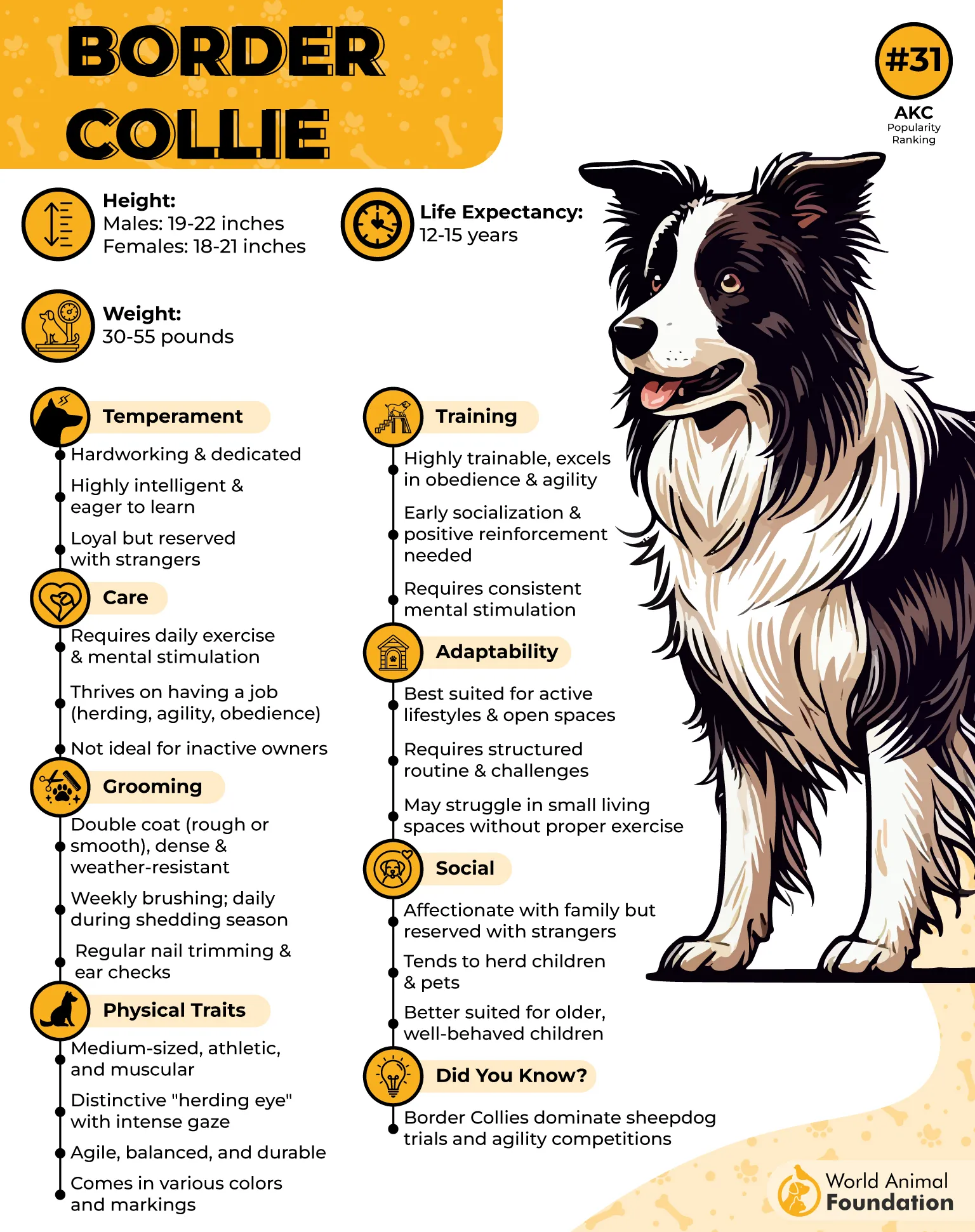
Daily activity matters a lot for this breed’s well‑being. Plan for long walks, play, and brain games, since Petplan notes exercise needs of two hours or more per day and recommends puzzle toys. Many enjoy recall drills and structured tasks that satisfy their herding instincts.
Grooming is simple but consistent: weekly brushing suits both smooth and rough coats, and shedding can be heavy in molting seasons. Trims are rarely needed. Their double coat protects them in varied weather.
In active households, Border Collies shine as companions. They’re generally sociable with other dogs and can live alongside cats when introductions start early. Adequate exercise prevents their high energy from overwhelming more laid‑back pets.
Quick Tips
Practice rock‑solid recall before off‑lead time to manage herding impulses.
For multi‑pet homes, introduce slowly and early to set friendly patterns.
2. Papillon
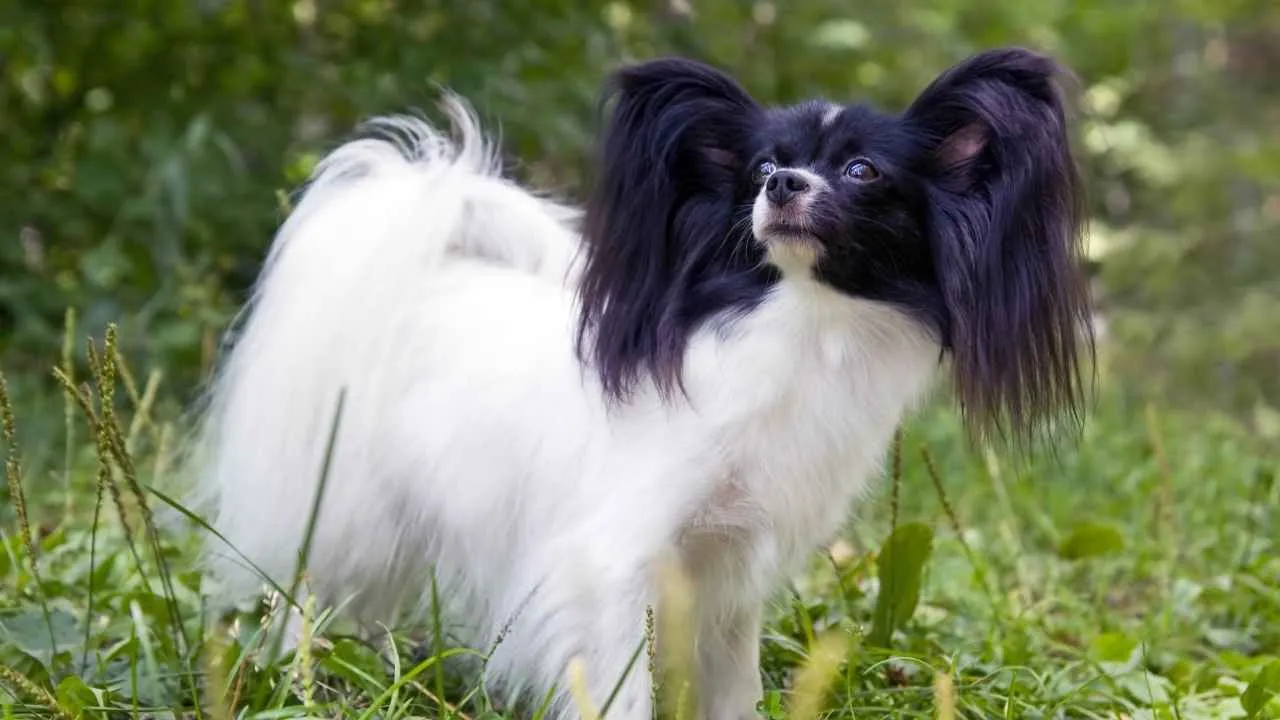
Papillons are confident and friendly toy dogs that settle nicely into multi-pet households. They’re described as adaptable and playful, which helps them get along with other animals. That easygoing attitude makes first meetings less stressful.
Small in size yet bold in spirit, the Papillon temperament is outgoing and people-oriented. They thrive on attention and enjoy being part of daily routines. With proper socialization, they pair well with children and other pets.
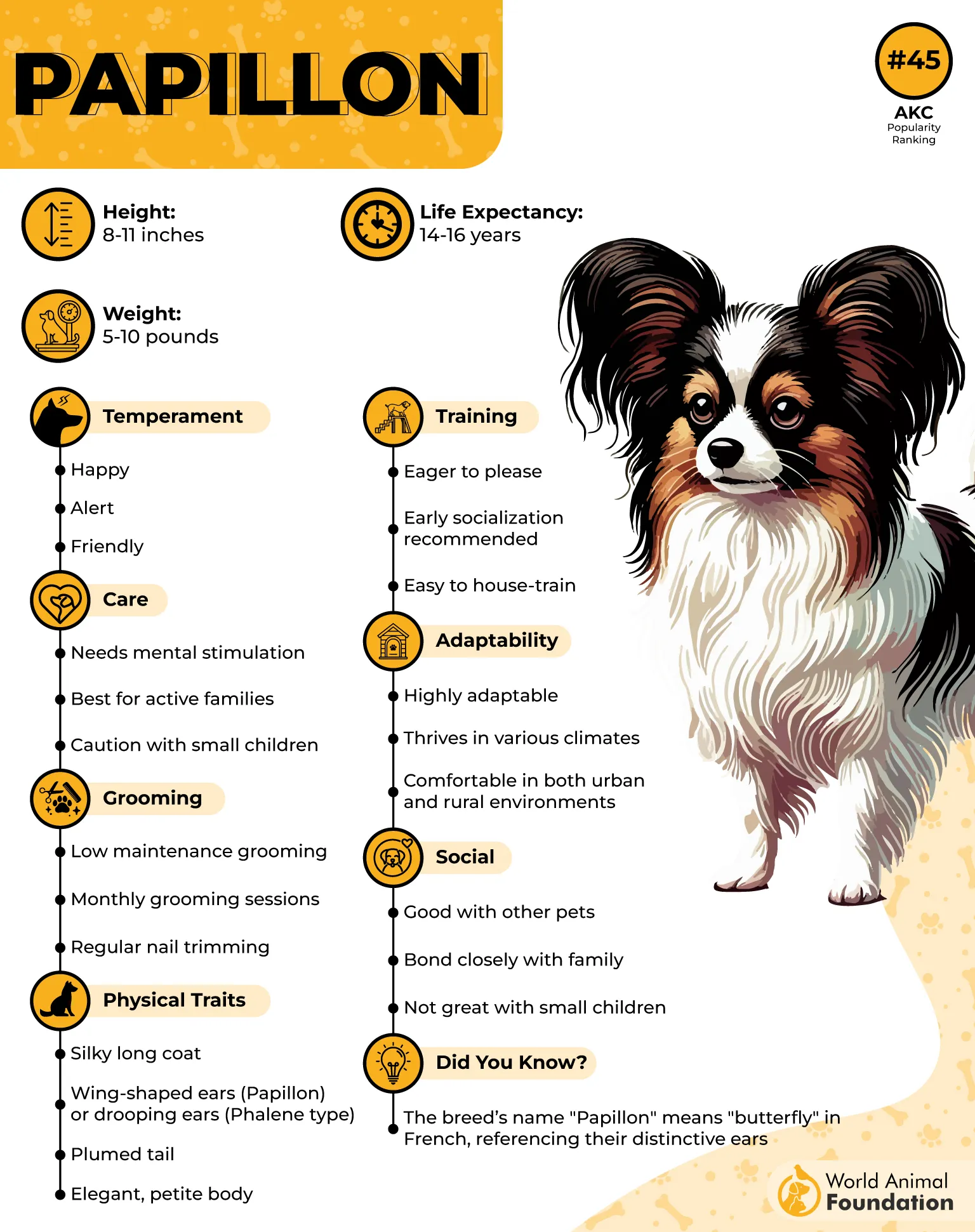
Exercise needs are low to moderate, roughly 30–45 minutes a day. Short walks, interactive play, and simple training games keep them satisfied. Mental stimulation through puzzle toys or basic obedience fits their quick minds.
That distinctive silky coat benefits from daily brushing to prevent tangles, especially around the ears, legs, and tail. Regular bathing every four to six weeks keeps the coat in top shape. Many owners schedule occasional professional grooming for extra polish.
Breed facts are petite and practical: typical height is about 8–11 inches, with a life expectancy of roughly 13–15 years. Despite their size, they carry plenty of energy and confidence. Their trainability makes them stand out in sports like obedience and agility.
Quick Tips
Keep sessions short and upbeat; reward-based training suits their eager, sensitive nature
Avoid high-impact activities; choose gentle play to protect their delicate frame
3. Shih Tzu

A calm, friendly temperament helps the Shih Tzu fit into multi‑pet homes. They aren’t typically dominant and tend to coexist comfortably with other pets. That gentle outlook supports peaceful daily life with dogs and cats.
Bred as companion dogs, Shih Tzus relish human company and like being near their people. They can be wary of strangers, so generous puppy socialization is important. With careful introductions, they’re usually comfortable with other dogs and pets.
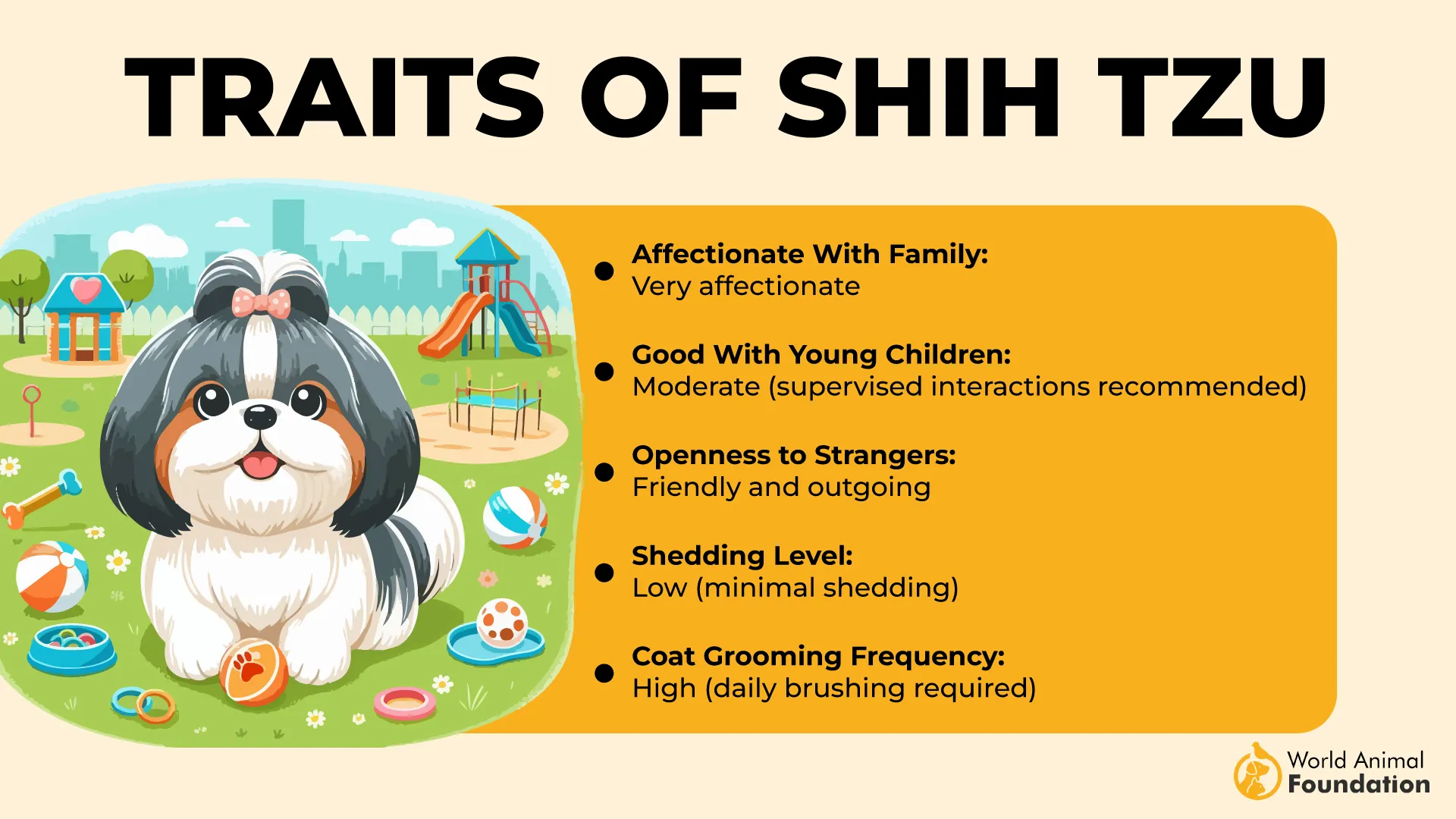
Vital stats are straightforward: AKC lists them as small to medium, with adults roughly 9-10.5 inches tall and 9-16 lbs. Plan for 30 minutes to an hour of daily activity, split into easy walks and play. As a flat‑faced breed, they need rest and cooling breaks in warm weather.
Coat care is a commitment. Their long, silky hair benefits from daily grooming, and they shed less often than it looks, though no dog is fully hypoallergenic. Teeth care matters too, since a slight underbite can crowd teeth.
Most Shih Tzus get along well with other dogs, but positive exposure is the key. Start with calm meet‑ups, skip busy dog parks at first, and build duration gradually. Owners often report that steady, friendly experiences shape a confident Shih Tzu.
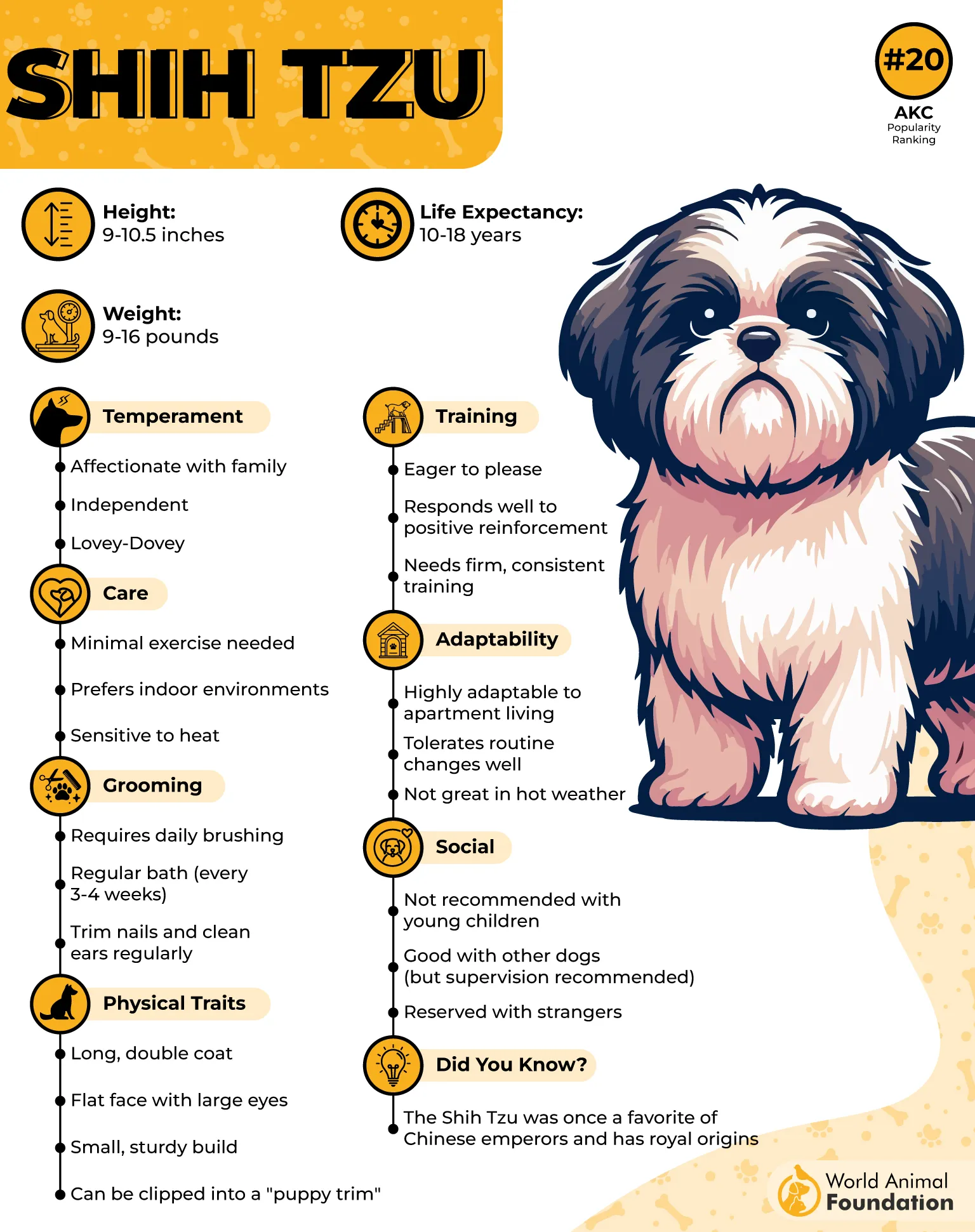
Quick Tips
Make introductions early and controlled; careful meetings support good inter‑pet manners.
Begin with quiet one‑on‑one greetings before visiting off‑lead parks.
4. Boston Terrier
Boston Terriers often befriend other dogs and may even get along with cats. Many will bark at unfamiliar dogs as a cheerful greeting rather than as a threat. Raising pets together or introducing them thoughtfully helps the bond.
Nicknamed the “American Gentleman,” the breed is cheerful and people-loving. They enjoy clownish antics and are generally sweet and dignified around family. Excitability can appear with new people, so guidance pays off.
Their compact build pairs with practical exercise needs. Yard play or an easy walk usually does the trick, but watch breathing and temperature since short snouts dislike heat. Height and weight land in the small, sturdy range listed above.
As per Orvis, training comes easily with rewards and praise. Housebreaking can take patience, and teaching a “quiet” cue keeps barking in check. Many Boston Terriers enjoy fetch and even beginner agility, with care to avoid overheating.
Outdoors, a leash or secure fence is smart because this breed is known to wander. Avoid extreme temperatures and never leave them outside unsupervised. Early socialization with other dogs helps reduce barking at unfamiliar canines.
Quick Tips
Socialize early to turn “hello” barking into polite, calm greetings with other dogs
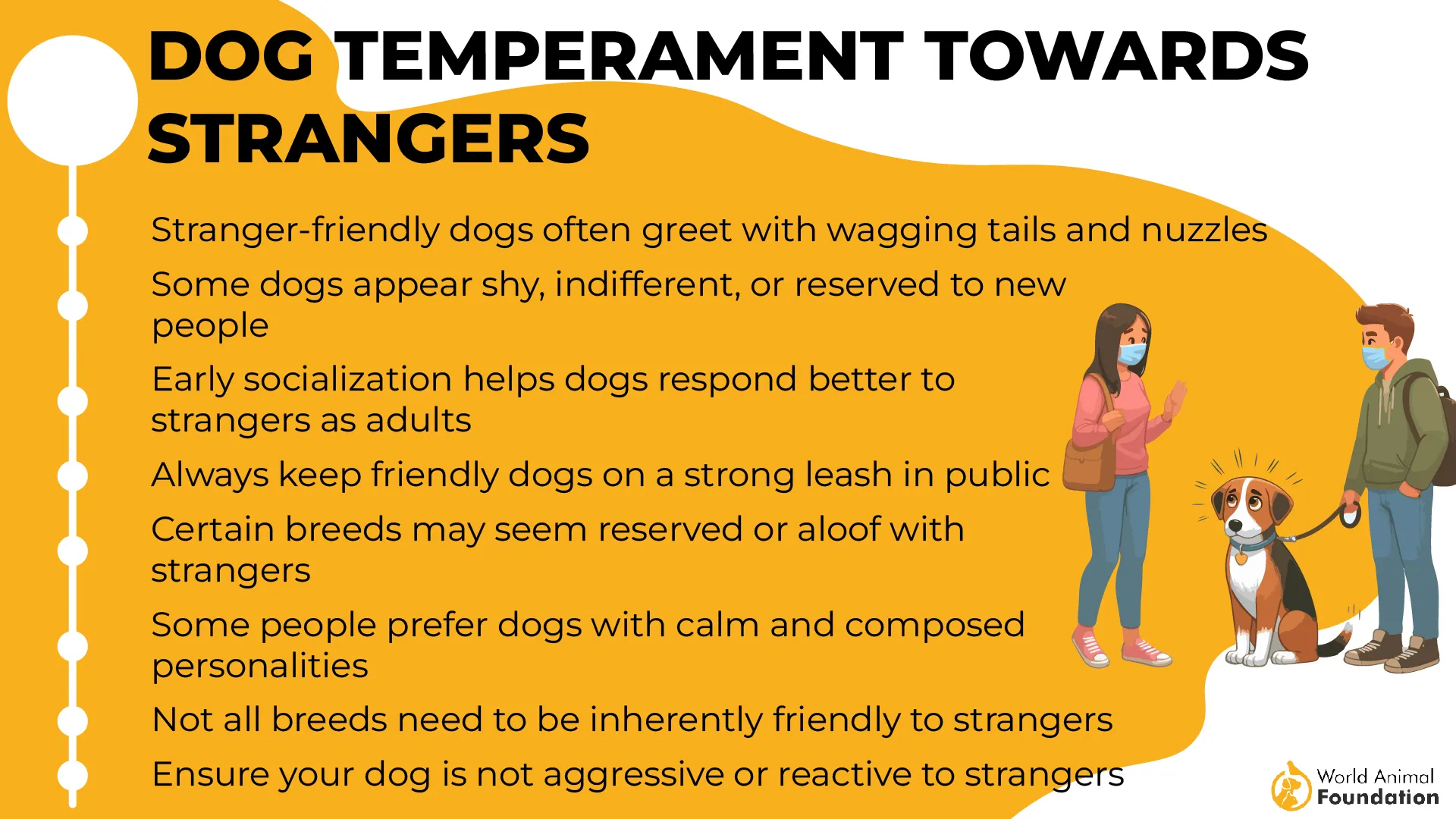
Plan play breaks and water stops during warm-weather activities
5. Golden Retriever
Golden Retrievers are famously patient and gentle, making them one of the easiest breeds to integrate into multi-pet households. They have a calm demeanor with other dogs, and their sociable nature means they rarely initiate conflict. A well-socialized Golden is as happy sharing toys as they are sharing the couch.
This breed’s intelligence and trainability contribute to smooth introductions. They quickly learn household rules and respond well to positive reinforcement, which is helpful in multi-dog environments. Obedience training also helps keep their natural exuberance in check.
Goldens are active dogs that need daily exercise to stay happy and healthy. Long walks, swimming sessions, or games of fetch keep them mentally stimulated and physically fit. They also excel in activities like agility and obedience trials.
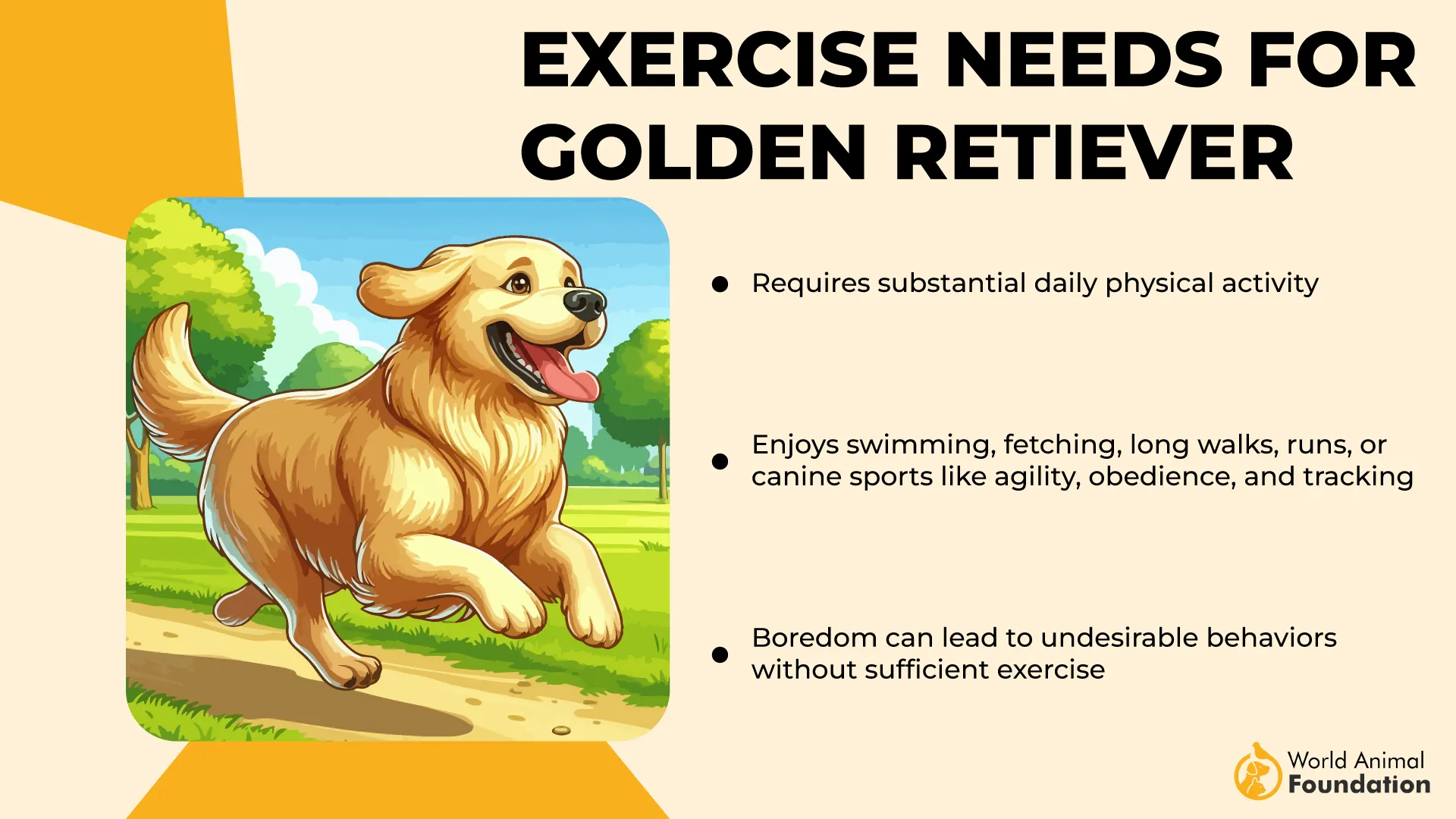
Their luxurious double coat requires regular grooming to stay in good condition. Brushing a few times a week helps reduce shedding and keeps tangles at bay, especially during seasonal coat changes. Bathing every month or two is usually sufficient.
Goldens are known for their adaptability and resilience in various living situations. Whether in a busy family home or a quieter environment, they tend to bond well with other pets and people alike.
Quick Tips
Use daily exercise to prevent boredom-driven mischief
Schedule regular brushing to control shedding
6. Boxer
Boxers are outgoing and playful, often forming fast friendships with other dogs. Their bouncy personalities and love for games make them a hit at dog parks and in multi-pet homes. Early socialization is key to managing their enthusiasm.
This breed is energetic and athletic, thriving on daily activity. They enjoy running, agility courses, and games of tug-of-war. Without enough exercise, they may channel that energy into less desirable behaviors.
Boxers are intelligent and loyal, making them eager training partners. They respond best to consistent, positive methods that engage their minds as well as their bodies. Obedience work also reinforces good manners around other dogs.
Their short coat is easy to maintain, requiring just weekly brushing to keep it sleek. Bathing can be infrequent unless they get particularly muddy or smelly from outdoor play.
While generally friendly, Boxers benefit from supervised introductions to new dogs, especially if the other dog has a more reserved personality. Controlled settings allow their enthusiasm to come through without overwhelming a new friend.
Quick Tips
Channel their energy into structured play to avoid hyperactivity
Keep introductions calm to help them adjust to new canine companions
7. Beagle
Beagles are pack-oriented by nature, which makes them excellent companions for other dogs. Historically bred for hunting in groups, they have an instinctive comfort with canine company. They usually adapt quickly in multi-dog homes.
These lively hounds have a strong sense of smell and an adventurous spirit. Their curiosity often leads them to explore every corner of the yard or follow an interesting scent on walks. Because of this, secure fencing is important.
Beagles are social and enjoy playtime with both humans and dogs. They thrive in active households that offer plenty of interaction and outdoor activity. Mental stimulation, such as scent-based games, keeps them content.
Grooming needs are minimal, with their short coat requiring only weekly brushing. However, their long ears should be checked and cleaned regularly to prevent infections.
Beagles can be vocal, often “talking” in a signature bay or howl. Training can help manage excessive barking, especially in close living situations. Positive reinforcement works best to encourage good habits.
Quick Tips
Use scent games to keep them engaged and satisfied
Keep them on-leash or in fenced areas to manage their tracking instincts
8. Cavalier King Charles Spaniel
Cavaliers are affectionate lap dogs that also enjoy canine company. They’re known for their sweet temperament and adaptability, fitting seamlessly into households with other pets. Their gentle nature makes them easygoing companions.
They have moderate energy needs and enjoy daily walks or light play sessions. While they love a romp in the yard, they’re equally content curled up on the sofa after exercise. This balance makes them ideal for various living environments.
Training is generally easy, as Cavaliers are eager to please and respond well to positive reinforcement. They enjoy learning tricks and commands, which can be a fun way to bond and stimulate their minds.
Their silky coats require regular grooming to prevent tangles and mats, especially around the ears and feathered legs. Brushing several times a week and occasional baths will keep them looking their best.
Cavaliers are sensitive dogs that thrive on companionship. They don’t do well when left alone for long periods, so households with multiple pets can help keep them happy and prevent loneliness.
Quick Tips
Brush frequently to prevent tangles, especially in feathered areas
Provide daily companionship to avoid separation anxiety
Conclusion
Bringing a new puppy or rescue dog into your home is exciting, but ensuring a calm and friendly manner helps set the stage for a lifetime of good relationships. Many friendly dog breeds, from the playful Cocker Spaniel to the gentle Basset Hound, were originally bred to work alongside people and other dogs. These pack dogs, hunting dogs, and versatile breeds often enjoy the company of a resident dog, especially when introductions happen in a safe and controlled environment.
Accredited dog behaviourists recommend basic reward-based training to help a puppy stay calm, read pup cues, and learn how to interact politely. Socialisation with mum and litter mates, other dog breeds, and relaxed pooches encourages a playful attitude while fostering a gentle personality.
Whether you choose affectionate dogs, enthusiastic dogs, or very relaxed pooches, remember that every dog’s personality is unique. Great family dogs and the most affectionate breeds share an easygoing nature and loving temperament. By making training fun and offering just as much fuss for all, you’ll create great companions who thrive with people and other dogs.


